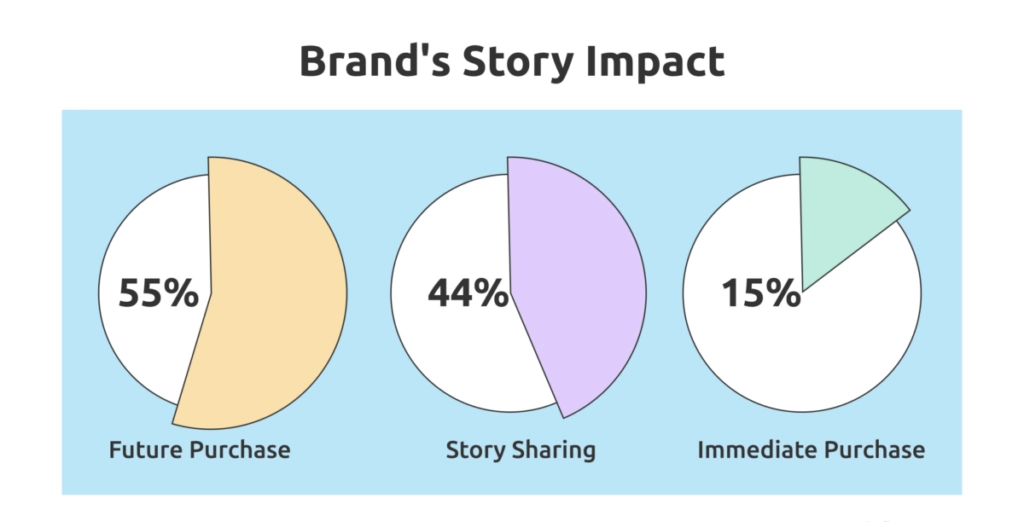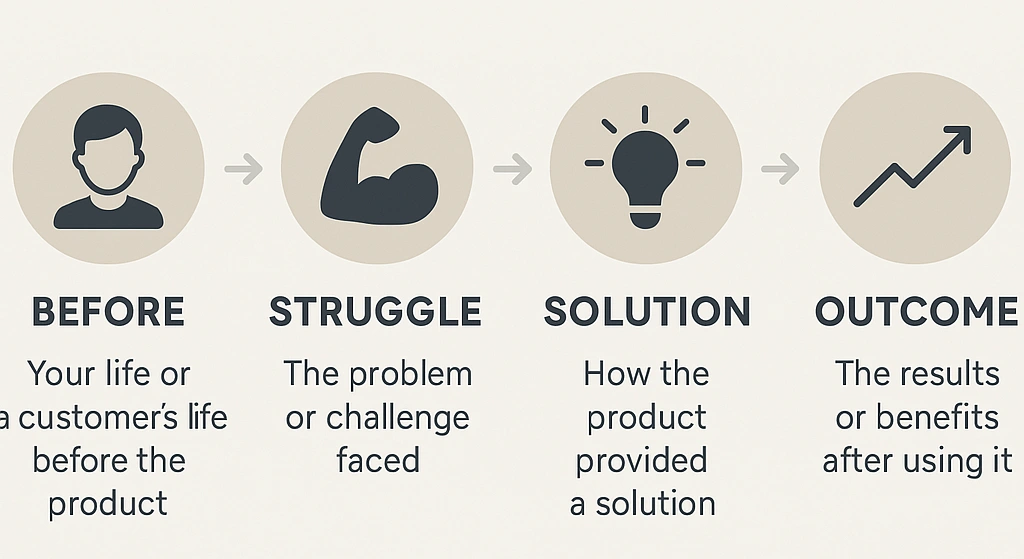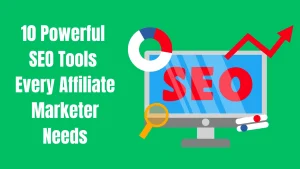Why Storytelling in Affiliate Marketing Sells More Than Product Features
Storytelling in affiliate marketing drives more sales than features. Learn why emotion beats specs and how to use it to convert.

Nearly 92% of consumers say they prefer ads that feel like a story rather than a list of features. That stat alone should tell you something: people don’t buy with logic. They buy with emotion. They buy what they feel a connection to.
People buy stories, not specs.
I remember promoting a tool for new bloggers. It wasn’t some high-end platform—just a clean, beginner-friendly site builder. Instead of listing its drag-and-drop builder or the customizable templates, I wrote about my cousin who used it to launch her first recipe blog.
She was tired of her 9-to-5, had no tech skills, and almost gave up three times. But with that one tool, she built her site over the weekend and landed her first brand deal three months later. That email converted five times higher than my feature-heavy campaign for the same tool.
The problem is, most affiliates lean on features. “It has X integrations.” “It’s the fastest.” “You get this, this, and this.” But that stuff doesn’t connect. It might impress, but it rarely moves people.
Storytelling does. It builds trust and shows what’s possible. It also makes your audience feel like, “That could be me.” And that emotional link is what sells, not the specs, not the features. Storytelling in affiliate marketing beats feature dumping every time.
In this guide, I’ll break down why storytelling works, how to turn dry product pitches into real stories, and how to tap into emotion to build trust that converts. You’ll get real examples, a method you can follow, and mistakes to avoid if you want your content to actually sell.
Key Takeaways
- Stories build emotional connections. 95% of buying decisions happen subconsciously, driven by emotion (Harvard study).
- People remember stories, not specs. Content with storytelling is 22x more memorable than just facts (Stanford research).
- Relatable moments build trust. Real stories beat product-first content every time.
- A simple story structure works best: pain → solution → outcome → call to action.
- Use short stories in reels, carousels, captions, and stories to hook fast and hold attention.
- Keep it honest. Don’t fake it. Audiences spot hype a mile away.
- Always connect the story back to the product. If not, it won’t convert.
What Is Storytelling in Affiliate Marketing
Storytelling in affiliate marketing means sharing real, relatable moments that connect a product to someone’s life or experience.
It’s not about writing fiction or making things up. It’s about showing how a tool or service actually helped someone solve a problem, reach a goal, or change something in their daily routine.
Instead of saying “this software has built-in email automation,” you talk about how someone used it to save time, grow their list, and finally launch their online course without burning out. You make it human. You make it stick.
And get this. It’s not just a creative angle. The numbers actually support it. Headstream reports that 55% of people are more likely to buy from a brand when they feel connected to its story.
Even more, 44% would share that story, and 15% would buy right away. That says a lot about how powerful storytelling can be in driving action.

Another study found that content using storytelling is 22 times more memorable than content that sticks to facts alone. That matters in affiliate marketing, where trust and memory drive clicks and conversions.
Good storytelling helps readers see themselves in the experience. They feel the emotion behind the product. They imagine the outcome. And that emotional pull is what moves people to act.
So when we talk about storytelling in affiliate marketing, we’re talking about making your content feel like a conversation, not a pitch. It’s simple. It’s honest. And when done right, it sells better than any list of product features ever could.
Why Features Alone Don’t Convert
Boring. Forgettable. Cold. That’s how most feature-only promos feel.
You list everything a product does: fast loading, built-in templates, integrations, AI tools…but nobody sticks around. People scroll past specs because they don’t feel anything. They don’t care how it works. They care about what it can do for them.
Just picture this. A reader doesn’t buy a landing page builder because it has pre-designed blocks. They buy it because they want to launch their first offer without hiring a designer. They want freedom, speed, and maybe a shot at finally making money online. Features don’t speak to that.
The research says the same. A Nielsen Norman Group study found that users ignore “feature dump” pages and spend more time on pages that speak directly to their needs or tell stories.
I’ll quote the summary…
Users often leave Web pages in 10–20 seconds, but pages with a clear value proposition can hold people’s attention for much longer. To gain several minutes of user attention, you must clearly communicate your value proposition within 10 seconds.
Also, the more features you list, the more confusion you create. People start overthinking. Do I need this? Will I even use that? What if it’s too complex? That hesitation kills clicks.
Affiliate marketing isn’t about showing off the product. It’s about showing why it matters. Features are just tools. Your job is to make the reader see the result and want it. That’s where storytelling steps in.
What Storytelling Does That Features Can’t
Storytelling builds what features can’t. That is trust, emotion, and connection.
When you share a story, you stop sounding like a marketer. You sound like a person. That shift makes people pay attention. It makes them feel something. A story about someone using a product to solve a real problem is more powerful than a page full of specs.
Stories stick. The human brain is wired to remember stories more than facts. A list of benefits might get skimmed. But a relatable moment—someone struggling, trying something new, seeing change—that stays with people.
Storytelling also makes you believable. It shows that you’ve used the product or know someone who has. It makes your content feel real. No one trusts a perfect pitch. But they’ll listen to an honest story, especially if it sounds like something they’ve gone through.
Cold hard data might impress. But real human connection moves people to click, buy, and share. That’s what storytelling does. And that’s what features will never do on their own.
Examples That Prove It Works
Let’s look at two real captions I used to promote the same affiliate product (Teachable), a course platform for beginners.
Story-Driven Caption (Posted on Instagram)
“Sarah was stuck. She’d filmed her first course but had no clue how to launch it. No tech background. No fancy setup. She tried Teachable, uploaded her videos, and made her first $497 in less than a week. All from her living room. If she can do it, so can you.”
Feature-Focused Caption (Posted on Facebook)
“Teachable lets you upload unlimited courses, add quizzes, connect Stripe, and track student progress with detailed analytics.”
Now here’s what happened:
| Caption Type | Clicks | Conversions | Comments | Saves/Shares |
|---|---|---|---|---|
| Story-Driven | 228 | 19 | 24 | 31 |
| Feature-Focused | 62 | 3 | 3 | 2 |
The story-driven version didn’t just get more clicks—it got people talking. They saved it. Shared it. Tagged friends.
Why? Because it felt real. It showed a result, not just a list. It made people see themselves using the product.
That’s what storytelling does. It sells without sounding like a sales pitch.
How to Craft a Simple Story for Affiliate Posts
You don’t need to be a writer to tell a good story. Just follow a simple structure: before, struggle, solution, and outcome. That’s it. You’re not writing a novel. You’re sharing a moment that feels real.

Start with your before. What was life like before the product? Maybe you were spending hours editing videos. Maybe your client was stuck trying to grow an email list. Keep it short and honest.
Next, show the struggle. Talk about what made things frustrating or slow. Don’t overdo it, just paint a clear picture. Something like: “She almost gave up after her first course flopped. No signups. No clue what went wrong.”
Now bring in the solution. Introduce the product in a natural way. “Then she tried Teachable. It took a day to set up, and she focused on sharing her story instead of tech stuff.”
Finally, show the outcome. What changed? What happened after? “A week later, she got 12 sales from just one Instagram post. That gave her the confidence to keep going.”
Then wrap it with a call to action that feels friendly, not pushy. Something like:
“That’s what helped me. Link’s in bio if you want to try it.”
That’s how you tell a story that sells. No need to sound clever. Just be real. Make it feel like a chat between friends. That’s what gets clicks.
Storytelling in Different Content Types
Storytelling works everywhere. You just need to shape it to fit the format. Here’s how to do it right in each type of content:
1. Reels
Skip the lecture. Show what’s happening. Use clips that take people through the problem and the fix. For example, record the screen showing a slow website, then switch to a faster load time after using a tool. No need to explain every detail. Let the visual do the talking. Add a line or two of text:
“What fixed this? This tool. Link in bio.”
2. Carousels
Use each slide to walk through one clear moment. First slide = pain. Second = struggle. Third = the solution. Final = outcome and CTA. Think of it like flipping through a mini storybook. The reader follows your journey, one tap at a time. Keep the tone natural, like you’re texting a friend.
3. Stories
This is where raw and real works best. Show behind-the-scenes moments. Share how you’re using the product that day. Drop a tip, answer a quick question, or show results. Use polls or question boxes to keep it interactive. It’s not polished, but personal.
Captions
This is where you hit quick. Lead with a pain point. Drop in a relatable win. Keep it short. Tell a moment that makes someone nod and say, “Yep, that’s me.” Then guide them:
“I used to fix it. Link’s in bio.”
The key is the same everywhere. Make people feel like they’re watching someone figure things out, not being sold to. That’s the difference between a scroll and a sale.
Common Mistakes to Avoid
A good story can sell. A bad one can kill interest fast. Here’s where people mess it up:
1. Making it too long: Nobody came for a novel. If your story drags, they’ll bounce. Get to the point. Set the scene, hit the struggle, show the fix, and move. Keep it tight.
2. Sounding fake or overhyped: If it sounds too perfect, people stop trusting you. “I made $10,000 in a week” without context? Feels made up. Keep it grounded. Talk like a real person, not a sales robot.
3. Not tying the story back to the product: A story is only useful if it leads somewhere. If people love your story but forget the product, you just gave them free entertainment. Always circle back to why that product mattered in the outcome.
4. Leaving out a clear CTA: Don’t assume people will go looking. Tell them what to do next. “Here’s what helped me. Link’s in bio.” Or “Try it for yourself. Grab the link in the comments.” One simple line closes the loop.
Tell it right. Keep it real. Connect the dots. Then ask them to act. That’s how you make storytelling convert.
Conclusion
At the end of the day, stories sell. Features don’t.
You can have the best product, the best payout, the flashiest benefits, but if your content reads like a manual, people will scroll right past it. What grabs attention is a real moment. A relatable struggle. A small win that someone else can see themselves having. That’s what makes people care. That’s what gets clicks.
So here’s the move. Test it this week. Pick one post. Skip the bullet points. Share a story instead. It doesn’t have to be deep. Just true. Show the before, the problem, the fix, and the result.
Try it. You’ll feel the difference.
To stand out, you need storytelling in affiliate marketing, not just a list of what your product does.
Are you struggling to make affiliate marketing work? I use my H.E.A.R.T funnel formula to help you find what’s missing and fix it fast. You’ll get focused, and 1-on-1 coaching will be built around what actually moves the needle so you stop wasting time and start seeing results. Book your session now
Frequently Asked Questions
What is storytelling in affiliate marketing and why does it work?
Storytelling in affiliate marketing means using real, relatable stories to promote products instead of just listing features. It works because people connect with experiences, not specs. A quick story about how a product solved a problem or helped someone reach a goal feels more genuine than a sales pitch. It builds trust and helps readers picture themselves getting the same results. When done right, storytelling grabs attention, keeps
How do I start using storytelling in affiliate marketing content?
Start with a simple format: a clear before-and-after. Share a small struggle, the solution you found, and the outcome. Keep it short and personal. Don’t overthink it—just talk like you’re sharing advice with a friend. Storytelling in affiliate marketing isn’t about fiction. It’s about showing how the product made a difference in real life. Then add a direct call to action, like “This helped me—link’s in bio.”
Can storytelling in affiliate marketing increase conversions?
Yes. Storytelling in affiliate marketing consistently drives higher engagement and conversion rates. People ignore features, but they lean in when something feels real. A quick story showing how a tool saved time, made money, or solved a problem sticks. It also lowers resistance. Instead of pushing the product, you’re inviting readers to relate and decide. Data backs this—story-based posts often outperform feature-based ones in clicks, comments, and affiliate sales.
What types of stories work best in affiliate content?
Short, relatable stories work best. Think everyday wins, beginner struggles, or client success moments. You don’t need drama—just something real. In storytelling in affiliate marketing, the best stories follow a clear structure: problem, solution, result. Show someone stuck, then show the product helping them get unstuck. Add some emotion or surprise, and end with a simple CTA. These stories stick because people see themselves in them.






